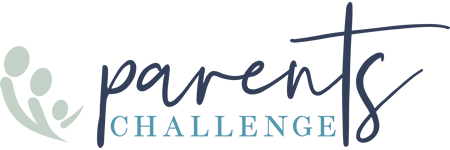Unofficial Summary of the New Law for the Coronavirus
Families – this is information that is important to know. A lot of changes happened these past few weeks, one of which impacts employment. This information comes from our evaluators.
Families First Coronavirus Response Act
Unofficial Summary from QREM’s Risk Manager
March 20, 2020
On Wednesday President Trump signed into law the Families First Coronavirus Response Act. This legislation was introduced in the House as H.R. 6201 on March 11, and is effective fifteen days after signature, or on April 2, 2020. It remains in effect until December 31, 2020. It covers a wide range of public health issues. Although its life will be relatively short, its impact for the rest of the year is significant for employers and employees in organizations with less than 500 employees. The US Department of Labor will enforce the Act as it applies to its FMLA and paid sick time provisions.
Paid Sick Time: Up to eighty (80) hours of paid sick leave (or the equivalent of two weeks of hours for part-timers) for use under the following circumstances, and to be available for immediate use regardless of an employee’s tenure. Note that items i through iii apply to leave for the employee’s own behalf; the remainder to family care:
- an employee subject to a coronavirus quarantine or isolation order;
- an employee who has been advised by a health care provider to self-quarantine due to coronavirus concerns;
- an employee who is experiencing symptoms of coronavirus and is seeking a medical diagnosis;
- an employee caring for an individual described in (i) or (ii) above;
- an employee caring for a child whose school or place of care is closed, or the child care provider of the child is unavailable, due to coronavirus precautions; or
- an employee who is experiencing any other substantially similar condition specified by HHS in consultation with the Treasury and Labor Departments.
Employees taking leave for themselves must receive their normal rate, but the pay rate for time off to care for family members must be paid at two-thirds of that rate. Paid sick time is capped at $511 a day (max $5,110) for personal emergency sick time and $200 a day and $2,000 max aggregate for family member sick time.
Employees with existing paid sick leave plans must use this benefit first; a worker cannot be required to use existing plans first.
Our reading of this brand new statute is that this sick time benefit does not apply to business closures that force employees to stop working at the facility, and cannot perform their jobs elsewhere.
Emergency Family Leave (amending the FMLA): For any employee who has been employed for at least thirty days, an employer will have to provide up to twelve weeks of “public health emergency leave.” This leave is triggered when an employee is unable to work or telework because of the need to care for a minor child, if the school or care facility has closed, or if the child’s caregiver is unavailable due to a coronavirus emergency.
The new law also provides:
- the first ten days of leave can be unpaid; thereafter workers on this leave will be paid 2/3 of the normal pay rate, capped at $200 a day and $10,000 in the aggregate.
- Except for employers with less than twenty-five workers, an employee on this leave is entitled to restoration to her prior position. Under the exception of less than 25 employees the employer eliminated the position for economic or other virus-related conditions and the employer makes reasonable efforts to restore the worker to an equivalent position.
- wages paid for family leave are exempt from the FICA payroll withholding of 6.2%.
- the Department of Labor is authorized to issue regulations that would exclude healthcare workers from this paid leave benefit and to exempt small businesses (50 or less) if the requirements of this amendment to the FMLA would “jeopardize the viability of the business as a going concern.” The latter we can assume applies to state level counterparts to the FMLA, which only applies to organizations with 50 or more workers.
Tax Credits: Refundable credits will be available to employers for their portion of the FICA payroll withholding tax.
- The sick leave credit for each employee would be for wages of up to $511 per day while the employee is receiving paid sick leave for his behalf, and $200 if caring for a family member or child whose school has closed or caregiver is unavailable. This credit is available for only ten days per employee per quarter. The family leave credit for each employee would be for wages of as much as $200 per day, and a maximum of $10,000.
- To prevent a double benefit (from a simultaneous credit and deduction), employers taking advantage of the credits, must include the amount of credits they receive in gross income.
- Employers who received the paid FML credit under the 2017 Tax Reform Act will have to offset against that credit the amount of the wages taken into account to determine the credit refundable under the Families First Act.


